What to do when your car won't start?
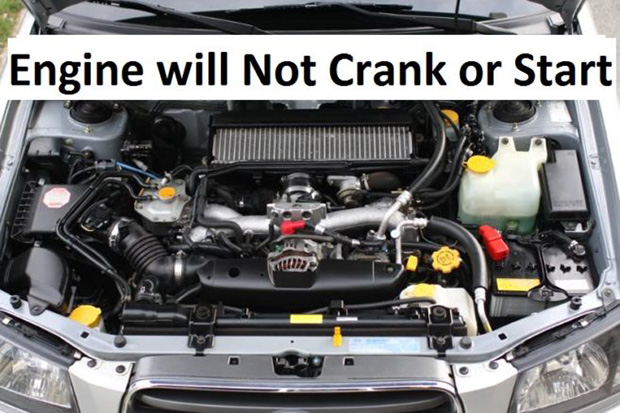
The car won't start! What next?
It's a busy morning and you are in a hurry. You quickly jump into your car and turn the key in the ignition only to find that the car won’t start. This is most assuredly very frustrating and can send you off in a terrible mood so none of us likes when this happens, and it's happened to most of us at one time or another and almost every single motorist has experienced this.
There are certainly many things that can go wrong with a car and cause it not to start, but like any problem, there is most likely, always a solution.
Most often when a car won't start in the morning, the first thing we automatically think of is the battery. Did I leave lights on and has the battery died because of it.
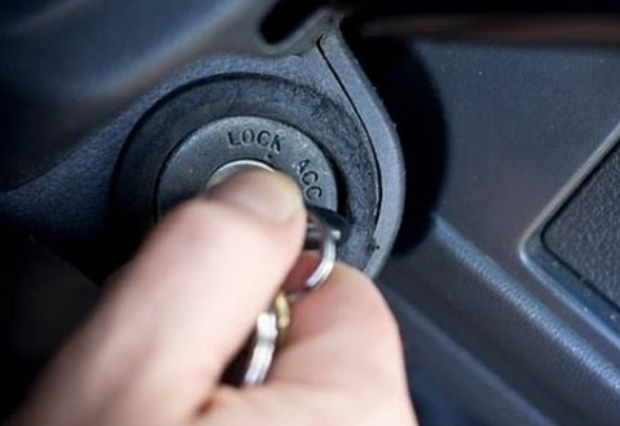
What to check first?
If the car won't start, check the basic things first:
- Is the battery OK? Read the next paragraph how to check the battery.
- If the car is an automatic and does not start in "Park," try starting in "Neutral"? Sometimes there can be a problem with a neutral safety switch
- Are the battery connections tight and not rusty?
- Maybe fundamentally simple but, is there enough fuel in the tank? It's common if the fuel gauge isn't working properly and the car runs out of fuel that the gauge could still show some fuel left.
- Is the "Security" or key-shaped light in the instrument panel stays on or blinking? Many cars are equipped with an immobilizer or a security system that allows the engine to start only if the correct key is used.
- Does the car have an anti-theft system that for some reason doesn't allow the car to be started? You can find more information about the immobilizer in your owner's manual.
How to check the battery?
One of the first culprits for a non-start is the battery. Sometimes we just forget to turn off the lights or that the battery is old and needs to be replaced. You may hear just a clicking noise when you turn the key or the starting motor may turn very slowly when attempting to start the engine.
Here is a simple tip to check if the battery is discharged: Turn the windscreen wipers on and if they move very slowly or much slower than usual, the battery is probably very low. Look at the overhead light. Does it goe dimmer when you try to start the engine or when you turn the wipers on? This can be an indicator that the battery is discharged. If the battery is more than 4 or 5 years old, it might be completely dead, so it won't take charge and the car will not restart again after you shut it off. In this case, you may need a new battery
If the battery is relatively new, it can be recharged but if its dead, it may need to be replaced. At this stage, you may want to jump-start your car and let the engine run for a while to recharge the battery. There could be a possibility that the vehicle's charging system can also cause the battery not to re-charge.
If when you turn the ignition on and no lights appear on the instrument panel, it means there is no power coming from the battery. You can also tell if a battery is dead by turning on the headlights and if they work, means the battery has power, so the problem could be with the ignition switch or wiring between the ignition switch and battery.
"Security" or Key-shaped light stays on or flashes on the dashboard
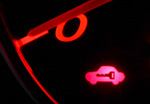
Many cars are equipped with an immobilizer or a security system that allows the engine to start only if the correct key is used. You can find more information about the immobilizer in your owner's manual. Modern ignition keys have a chip inside with a security code that matches the key to the car. When you insert the key into the ignition, the security system reads the code. Normally when you turn the ignition on, you would see a "Security" light to come on for a short time and then it goes off. This means the code in the ignition key is correct and the car is allowed to start.
If you turn the ignition ON, and this "Security" light stays on or flashes, it means that your car security system does not recognize the key or there is some problem with some part of the security system itself. Sometimes, the key is just needed to be reprogrammed. In certain cases there is a simple procedure for the key to re-learn the code and this can fix the problem. If this fails, why not try using the spare key and if that doesn't work, you should contact your dealer.
The "check engine" light does not come on
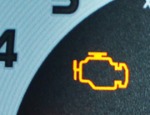
When you first turn on the ignition you will notice the “Check Engine” light turns on for a second or two. This indicates that the engine’s computer called the ECM, PCM OR ECU is powered on.
- ECM - Electronic Control Module
- PCM - Powertrain Control Module
- ECU - Engine Control Unit
If the engine light does not turn on, it is possible that there is no power coming to the engine computer, possibly due to a burnt fuse, broken wire or a faulty relay possibly or it could mean a faulty computer itself.
The starting motor won't tick over
If, when you turn the ignition key and nothing happens it means that the starting motor is not turning over the engin over the engine, there could be a number of possible reasons. Here are some of them:
- The ignition switch could be bad
- The starter solenoid control wire could have a bad connection
- The starter motor itself or a starter solenoid could be bad
- A problem with a neutral safety switch.
- A problem with the vehicle's security system or some other electronic control module
Of course, there could be other reasons, but most often this happens when there is not enough electric current for the starter motor to turn over the engine. It is also a good idea to check the battery terminals to make sure they are not corroded. If the battery is OK and the battery terminals appear clean and not corroded, the starter solenoid, battery cables or the starter motor itself could be a problem.
If the engine cranks progressively slower, then just clicks, it means that the starter motor doesn't have enough power to start the engine. This problem can be fairly easy to diagnose, as there are only two cables (positive and negative) to deliver the electric current from the battery to the starter motor.
Other common problems for the engine not starting
If your engine cranks normally, but won't fire up and start, it means that your battery is good and the starting motor is working so you would look for other issues.
Let's look at the most common possible causes:
- Engine is flooded
- Bad fuel pump or fuel pump relay
- Failed airflow sensor
- Bad crank or cam sensor or circuit
- Problems with the engine computer (PCM) or PCM circuits
- Faulty ignition coil pack
- Wrong timing
- Low compression
Engine is flooded
Engine flooding is common in older cars, especially cars with high-mileage vehicles. A car may start and then stalls but doesn't restart again. The Mazda RX-8, for example, was famous for this problem of flooding engine. The excess fuel would foul the spark plugs and washes of the oil from the piston rings would reduce the compression. The mechanic might replace the spark plugs and re-charge the battery. Sometimes you can take out the plugs and let the fuel dry out after which you can replace them and start the engine. With new spark plugs and re-charged battery, the engine usually starts well.
Bad fuel pump or fuel pump relay
Again, on old cars with high mileage, the fuel pump can just clap out which means the car won’t start. A mechanic will test for fuel pressure among other things and check the fuel pump electric circuit and the relay. A bad fuel pump or main relay is very common in some BMWs and Honda’s as well as other vehicles.
Bad mass airflow sensor
A failed mass air flow sensor can cause a car not to start. Usually the car will start for just a second or two and then stalls out immediately. Many mechanics use known good mass air flow sensor to test if the engine starts. Some mechanics will try to disconnect the mass air flow sensor altogether to see if the car starts without it. Replacing a mass air flow sensor is easy and not very expensive.
Bad crank or cam sensor or wiring
Another sensor which can act up and cause the car not to start is the crankshaft position sensor (crank sensor). This is an important device which measures the engine RPM. Without this sensor, the car won't start and often it is the wiring which gets damaged which can cause the car to stall and start intermittently. A cam sensor works in a similar way to the crankshaft sensor except it measures the rotation of the camshaft. Many new cars have two camshaft sensors, one for each camshaft. Problems with cam and crank sensor are common in many vehicles.
Problems with the engine computer (PCM) or PCM circuits
A faulty PCM engine computer is rare, but it has been know to be an issue. In some cars, you can tell that the PCM is not powered by watching the "Check Engine" icon when the ignition is turned on: when the PCM is not powered, the icon does not illuminate.
Faulty ignition coil pack
Sometimes in older cars, a faulty ignition coil pack can be an issue. Failure of the ignition coil pack can often happen in rainy weather or after washing the engine. A mechanic can quickly test the coil pack. Most newer cars have separate ignition coils for each cylinder. Although they also very common to fail, they won't cause an engine not to start.
Incorrect timing
Sometimes there can be a timing belt issue and can happen after a belt or chain has been replaced. In cars with a timing belt, an old belt can skip which alters the timing. This kind of repair could be quite expensive because incorrect timing can cause bent valves in the "interference" engines. In non-interference engines, replacing a timing belt and resetting the timing can fix the problem.
Low compression in the engine
An engine usually loses compression after it overheats or when a timing belt or chain skips. The usual solution is to replace the engine which is very expensive depending on the complexity of the work. These days though, locating a used engine is not that difficult and you can have the engine changed successfully.
Jump-starting a car
When a battery is weak, jump starting your car is the best way to get the engine running. It is advisable always to carry jump leads with you as it's a fairly quick procedure. The process is simple, but you should check your owner's manual for the right way to do this in your vehicle because different cars have different locations of the connection points.
It's very important to connect the jump leads the right way, so do check your owner's manual carefully. If you don't have an owner's manual, many car manufacturers offer to download an electronic copy from their websites. Be careful, to connect to the right terminals as if you accidentally mix up the positive and negative cables while jump-starting his car; it can cause extensive damage to the vehicle's electrical system.
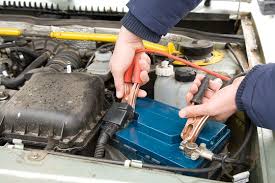
Author

Justin Kavanagh
Justin Kavanagh is a recognised leader
in automotive intelligence and vehicle
data supply to the entire motor industry.
He has almost 20 years experience in
building systems from the ground up.
As the Managing Director of Vehicle
Management System, he understands the
need and importance of trustworthy and
reliable vehicle history and advice to
both the trade and the public.
Follow me on LinkedIn